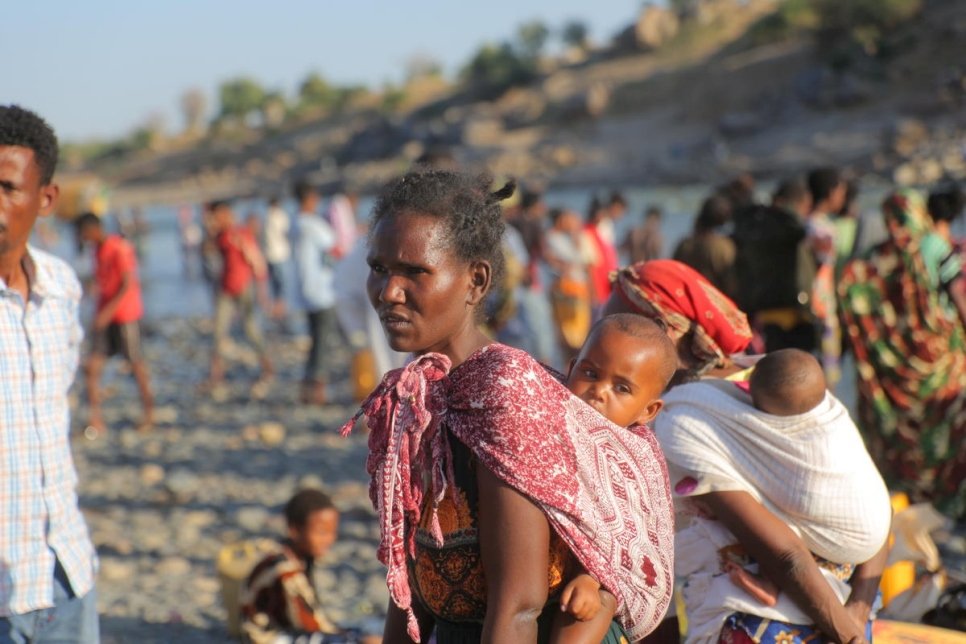Ethiopia Tigray emergency
“We did not know what was going on when we heard the gun shots. Many people were killed – we could see 10, twenty bodies lying on the ground. That’s when we decided to leave. I walked until my legs were injured and bleeding. I thank God that we are safe here and we have something to eat.”
– Gannite, Ethiopian refugee woman who fled into Sudan from clashes in the Tigray region
More than 3,000 people have been fleeing each day from Ethiopia’s Tigray region into eastern Sudan – an influx unseen over the last two decades in this part of the country.
Refugees are arriving in remote areas that have very little infrastructure. The majority have crossed from Ethiopia into Sudan through Hamdayet border point in Kassala State and others at Lugdi in Gedaref State. It takes at least a six-hour drive from the nearest big town, making it difficult to quickly deliver food and supplies.
The transit centres at the border areas are overcrowded due to the sheer number of arrivals from Tigray, increasing the risk of disease including COVID-19. 9,000 people have been transferred to the first refugee settlement side identified by the government; there is a critical need to identify more sites so that refugees can be relocated away from the border and can access assistance and services.
Within Ethiopia itself, the potential for further displacement inside the country is growing by the day. The lack of electricity, telecommunications and access to fuel and cash severely hampers any humanitarian response. UNHCR is concerned about the safety and security of all civilians in Tigray, including the 96,000 Eritrean refugees located in four camps there, who were completely reliant on assistance. We join the rest of the UN in calling for all parties to the conflict to protect civilians, respect the safety of humanitarian staff, and allow access to reach people in need.
What is UNHCR doing to help?
UNHCR is working round-the-clock with authorities and partners in Sudan to provide vitally needed emergency shelter, food, potable water and health screening to the thousands of refugee women, children and men arriving from the Tigray region in search of protection. We are distributing relief items, including blankets, sleeping mats, plastic sheeting and hygiene kits. Information campaigns on COVID-19 prevention have started together with the distribution of soap and 50,000 face masks at border points.
UNHCR and the government are registering the new arrivals from Ethiopia and we have deployed staff to identify the most vulnerable people with specific needs, such as unaccompanied children, women and the elderly. We are transferring refugees from the border transit centres to Um Raquba settlement – 70 kilometres inland – and are striving to identify more sites with the authorities.
Preparations are ongoing in other neighbouring countries and within Ethiopia in view of possible further cross-border and internal displacements. We are ramping up our response, but we need immediate support from donors to be able to continue assisting the increasing number of people forced to flee conflict in Ethiopia’s Tigray region.
More information:

